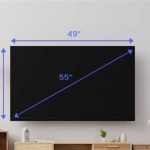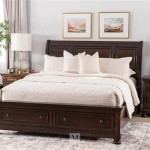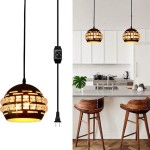Blackout Curtains for Master Bedroom: Enhancing Sleep and Privacy
Blackout curtains, particularly those designed for master bedrooms, represent a significant investment in home comfort and well-being. These curtains are specifically manufactured to block a substantial amount of external light, offering a range of benefits from improved sleep quality to enhanced privacy. Understanding the features, materials, and considerations involved in selecting blackout curtains allows homeowners to make informed decisions that align with their individual needs and preferences.
The primary function of blackout curtains is light blockage. Unlike standard curtains that filter light, blackout curtains are engineered to minimize or eliminate external light intrusion. This is achieved through a combination of tightly woven fabrics, multiple layers, and specialized coatings. The effectiveness of a blackout curtain is often measured by its ability to reduce light transmission, with high-quality options blocking up to 99% of incoming light. This extreme light reduction is particularly valuable in master bedrooms, where optimal darkness is conducive to restful sleep.
Beyond light blockage, blackout curtains provide additional benefits, including noise reduction and insulation. The dense fabric used in these curtains can absorb sound waves, contributing to a quieter and more peaceful sleep environment. This is especially beneficial in urban areas or homes located near busy streets. The insulating properties of blackout curtains also help regulate room temperature by preventing heat from entering during the summer and escaping during the winter. This can lead to reduced energy consumption and lower utility bills.
The selection of appropriate blackout curtains for a master bedroom requires careful consideration of several factors, including fabric type, color, hanging style, and overall design aesthetic. A thorough understanding of these elements ensures that the chosen curtains effectively fulfill their intended purpose while complementing the room’s décor.
Understanding Fabric and Construction
The fabric used in blackout curtains plays a crucial role in their effectiveness and durability. Several types of fabrics are commonly employed, each offering unique characteristics and performance attributes. One popular option is microfiber, known for its soft texture, wrinkle resistance, and excellent light-blocking capabilities. Microfiber curtains are often relatively lightweight and easy to maintain, making them a practical choice for many homeowners.
Another common fabric used in blackout curtains is polyester. Polyester is a synthetic material that is durable, fade-resistant, and relatively inexpensive. It often forms the base layer in multi-layered blackout curtains, providing a solid foundation for light blockage. Polyester curtains are available in a wide range of colors and patterns, offering versatility in design options.
For those seeking a more luxurious feel, blackout curtains made from heavier fabrics like velvet or suede are available. These materials provide excellent light blockage and noise reduction due to their inherent density. However, they are generally more expensive and require professional cleaning to maintain their appearance.
The construction of blackout curtains often involves multiple layers. A typical configuration includes a face fabric (the visible side of the curtain), a middle layer designed to block light, and a backing fabric. The middle layer is often made of a dense, tightly woven material or a specialized coating such as acrylic or polyurethane. This coating acts as a barrier against light penetration, significantly enhancing the blackout capabilities of the curtain. The backing fabric provides additional insulation and helps to protect the middle layer from damage.
The quality of the stitching and seams also contributes to the overall performance of blackout curtains. Well-constructed curtains will have tightly sewn seams that prevent light from seeping through. Reinforced edges and hems enhance durability and prevent fraying over time.
Color and Design Considerations
While the primary function of blackout curtains is light blockage, their aesthetic appeal is also an important consideration. The color and design of the curtains should complement the overall décor of the master bedroom, creating a cohesive and visually appealing space. Darker colors, such as navy blue, charcoal gray, and deep brown, tend to block more light than lighter colors. However, even lighter-colored blackout curtains can effectively block light when constructed with multiple layers and a specialized coating.
Patterned blackout curtains can add visual interest to a room, but it is important to choose patterns that do not compromise light blockage. Intricate patterns with light-colored accents may allow some light to pass through. Solid-colored curtains or curtains with subtle, dark-colored patterns are generally more effective at blocking light.
The style of the curtain heading, such as grommets, rod pockets, or pleats, can also influence the amount of light that enters the room. Grommet-top curtains, which have metal rings sewn into the top of the curtain, often allow some light to seep through the grommet holes. Rod pocket curtains, which are hung on a rod that slides through a pocket at the top of the curtain, tend to block light more effectively. Pleated curtains, such as pinch pleat or goblet pleat curtains, offer a more formal and tailored look and can be customized to minimize light gaps.
Consideration should be given to the existing elements of the master bedroom, such as wall color, bedding, and furniture style. Blackout curtains should coordinate with these elements to create a harmonious and balanced aesthetic. For example, in a room with neutral-colored walls and bedding, bold-colored or patterned blackout curtains can add a pop of color and visual interest. In a room with already vibrant colors and patterns, neutral-colored blackout curtains can provide a calming and grounding effect.
Installation and Maintenance
Proper installation is crucial to maximizing the effectiveness of blackout curtains. The curtains should be hung as close to the window as possible to minimize light gaps around the edges. Using a curved curtain rod that extends beyond the window frame can help to block light from the sides. Installing a valence or cornice above the curtains can also help to block light from the top.
It is important to measure the window accurately before purchasing blackout curtains to ensure a proper fit. The curtains should be long enough to reach the floor or extend slightly beyond it. This helps to block light from the bottom and creates a more polished and refined look. Consider the height of the curtain rod when measuring the length of the curtains.
Maintaining blackout curtains is relatively simple. Most blackout curtains can be machine washed on a delicate cycle and tumble dried on low heat. However, it is important to check the manufacturer's instructions for specific care recommendations. Some blackout curtains, particularly those made from delicate fabrics or those with specialized coatings, may require professional cleaning. Regularly vacuuming or dusting the curtains can help to remove dust and debris and prevent buildup that can dull the fabric.
Over time, the light-blocking properties of blackout curtains may diminish slightly due to wear and tear. To prolong the life of the curtains, avoid exposing them to direct sunlight for extended periods. Consider using window film or blinds in addition to blackout curtains for added light control and protection. Regularly inspect the curtains for signs of damage, such as tears or fraying, and repair them promptly to prevent further deterioration.
Blackout curtains are a valuable addition to any master bedroom, offering a range of benefits from improved sleep quality to enhanced privacy and energy efficiency. By understanding the various factors involved in selecting and installing blackout curtains, homeowners can create a more comfortable, relaxing, and functional space that promotes well-being.

Master Bedroom Curtain Ideas Choose Drapes Styles Fabrics Color Dolcewe

Best Blackout Curtains For Bedroom I Ideas Tips Spiffy Spools

5 Sustainable Blackout And Privacy Curtains For Deeper Sleep The Good Trade

Best Bedroom Curtains Ideas For Window Treatments

How To Transform Your Bedroom Into A Sanctuary For Sleep

How To Use Dark Curtains Shape A Dramatic Cozy Interior Decoist

How To Do Blackout Drapes The Right Way Jabot Window Coverings And Interiors

Master S Bedroom Inspiration Electric Curtains And Blackout Blinds Contemporary London By Grants Houzz Ie

Master Bedroom Curtains Ideas Window Styling Tips Spiffy Spools

Bedroom Curtains Made To Measure Prêt à Vivre








